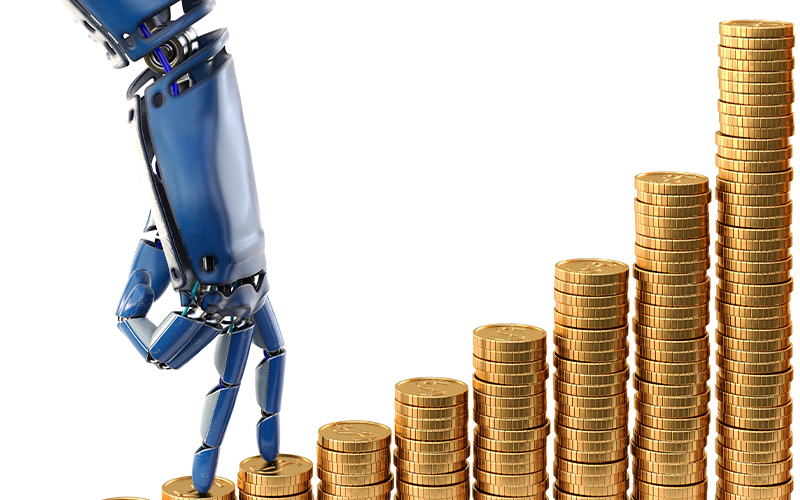Financial Services
Why tax administrators are embracing digital transformation?
The economic crisis that came about as an aftermath of the pandemic has shifted the focus of tax administration to digital transformation. This is because digitalisation facilitates the remote functioning of tax administration. Besides, digital transformation enhances efficiency, speeds up the processes, minimises errors thereby reducing administrative and compliance costs. The COVID-19 pandemic has also brought to light the fact that organisations that had already adopted digital technologies were more resilient when compared with those that lacked a digital approach.
For organizations on the digital transformation journey, agility is key in responding to a rapidly changing technology and business landscape. Now more than ever, it is crucial to deliver and exceed on organizational expectations with a robust digital mindset backed by innovation. Enabling businesses to sense, learn, respond, and evolve like a living organism, will be imperative for business excellence going forward. A comprehensive, yet modular suite of services is doing exactly that. Equipping organizations with intuitive decision-making automatically at scale, actionable insights based on real-time solutions, anytime/anywhere experience, and in-depth data visibility across functions leading to hyper-productivity, Live Enterprise is building connected organizations that are innovating collaboratively for the future.
How do Tax administrations benefit from digital transformation?
- A data-centric approach helps close gaps and leverage missed opportunities without increasing the level of taxation. An example of a data-centric approach is, verifying tax compliance of citizens seeking tax relief under current tax rules by analysing the data of their previous filings.
- Electronic platforms for tax registration, filing, payment, etc. offer transparency to taxpayers. They can get the assurance that their tax payments are being deposited in government accounts.
- Digital technologies offer a better experience to taxpayers as they can complete their filing processes in very less time. Besides, these technologies also reduce the number of payments that an individual taxpayer must make in a year.
- An automated tax administration system offers personalised, real-time, reliable services to taxpayers that can be accessed online or offline with ease.
- AI-based data capture systems extract data quickly and accurately from paper-based records. Automation of processes for matching filing data with third party datasets enhances efficacy.
- The data of taxpayers can be leveraged for non-tax-related initiatives such as identifying growth drivers in the economy, detecting labour market violations, and ascertaining the well-being of vulnerable groups in society.
- Technology also helps detect and prevent tax fraud and evasion. It also facilitates higher revenue recovery and simplifies tax compliance solutions for businesses and tax administrators.
- The use of digital technologies increases the productivity of tax professionals besides optimising operations and costs.
Technologies used in tax administration include:
Artificial Intelligence(AI)
Machine Learning and Natural Language Processing are technologies that interpret events, automate decisions and take the necessary actions.
Big Data
Different tax administration functions require analysis and manipulation of large volumes of data. Data management is a primary driving force for digitalisation in tax administration. Big data facilitates data management of large volumes and varieties of data and increases the speed of data management.
Data Analytics
Sophisticated tools and techniques are deployed for automated examination of data and content. It facilitates the discovery of profound knowledge, making forecasts, and generating recommendations.
Blockchain
Blockchain is deployed for:
- Managing public distributed ledger of network nodes.
- Maintaining details of transactions gathered in data blocks.
Cloud Computing
Cloud computing facilitates shared use of storage, enhances computational capacity, and provides application software. Cloud computing services such as public cloud, private cloud, hybrid cloud, or community cloud are being used for streamlining tax administration functions.
Internet of Things (IoT)
IoT devices are used for data collection and exchange. Data generated in the tax administration function can be tracked and measured with the help of IoT.
Robotic Process Automation (RPA)
RPA is leveraged to automate repetitive, rule-based processes in tax administration. Automation reduces human errors, increases speed, and enhances efficacy. It also frees up tax professionals’ time for high-skill tasks.
These technologies, whether adopted individually or in combination, enhance taxpayers' satisfaction, empower tax agencies and optimise services.
Digital transformation of tax administration requires:
- Professionals who are proficient in data analytics, statistics, process improvement, and change management.
- Dedicated tax technology, data, and project management specialists who can develop tax technology and digital transformation.
- Realignment of the workforce to include technologies like AI such that the employees and technology collaborate to enhance the outcomes.
In conclusion
Digital transformation has made its presence felt, rather strongly, in different functions performed by businesses and governmental agencies. And, tax administration is also one of the functions that are embracing digitisation. Tax administration is a complex process that requires the management of large volumes of data. Digital transformation enables tax administration to leverage data for predictive modelling and analysis of macroeconomic trends, policy changes, and more. It reduces operation times, minimises costs, and enhances risk management techniques, and audit efficiency.






